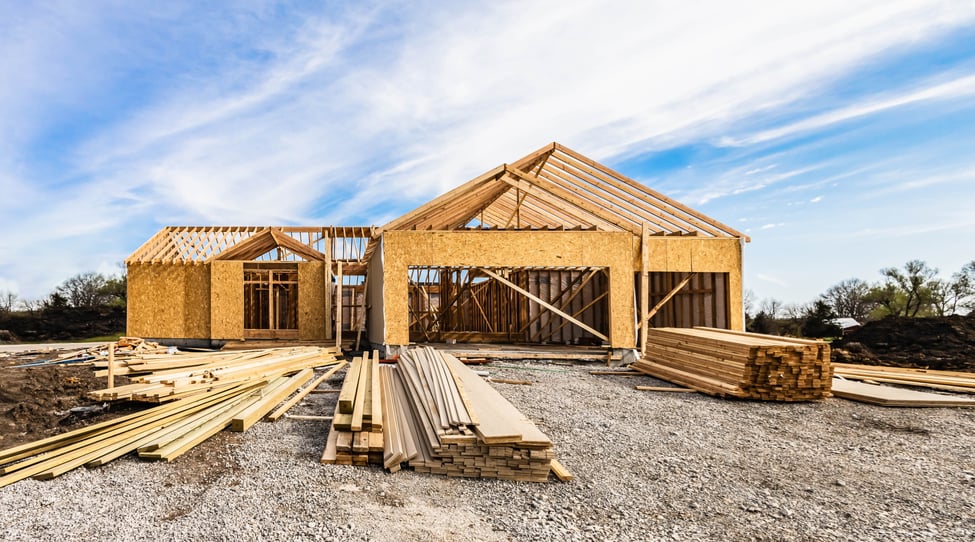When buying a new construction home, there are deals to be had and the journey can be exciting and full of promise!
However, navigating the process requires planning and informed decisions. Here’s a comprehensive guide to help you step confidently into the world of new home construction.
1. Understand the Benefits of New Construction
Purchasing a newly constructed home offers several advantages:
Customization Options: Many builders allow you to personalize finishes, layouts, and features.
Energy Efficiency: New homes often include modern appliances, insulation, and windows, reducing utility costs.
Warranties: Builders typically provide warranties for structural components and systems, offering peace of mind.
Low Maintenance: New materials and construction techniques mean fewer repairs in the early years.
2. Research Builders
Warning: Not all builders are created equal. Take the time to:
Reviews: While reviews are a great tool, in general, people use them as an opportunity to vent. As your realtor, I will canvas the neighborhood to ask original purchasers what their experience was with the builder.
Visit Model Homes: Inspect the quality of work in completed projects.
Verify Credentials: Ensure the builder is licensed and adheres to local building codes.
3. Know Your Budget
Building a home can come with hidden costs. Be prepared by:
Factoring in Upgrades: Builder-provided upgrades, like premium countertops or hardwood floors, often come at an additional cost.
Considering Closing Costs: These can include legal fees, taxes, and adjustments.
Budgeting for Landscaping and Extras: New builds often lack features like fences, patios, or finished basements.
4. Understand the Timeline
New construction doesn’t happen overnight. The timeline can vary depending on:
The Builder’s Schedule: High demand or labor shortages may delay construction.
Weather Conditions: Rain, snow, or extreme temperatures can affect timelines.
Permit Approvals: Municipal permits can sometimes take longer than expected.
Plan for potential delays and have a contingency plan if you’re selling your current home or arranging a move.
5. Work with a REALTOR®
Having an experienced real estate agent on your side is invaluable. A REALTOR® can:
Negotiate Terms: Builders rarely lower base prices but may offer incentives or upgrades.
Explain Contracts: Builder contracts differ from resale agreements and often favor the builder.
Provide Market Insights: They can help you understand if the price aligns with local market trends.
6. Review the Warranty
New construction homes typically come with warranties, which can include:
Workmanship and Materials: Covers items like plumbing, electrical, and finishes.
Structural Components: Protects against defects in the foundation, roof, or framing.
Manufacturer Warranties: Appliances and systems often come with their own coverage.
Review the warranty terms carefully to understand what is covered and for how long.
7. Who and/or What is Tarion?
If you’re buying a new construction home in Ontario, you’ll encounter Tarion, a not-for-profit consumer protection organization. Tarion administers the Ontario New Home Warranties Plan Act, which ensures builders adhere to high standards and provides warranty coverage for buyers.
Tarion’s role includes:
Warranty Coverage: Impartial third party that warranties for defects in materials, workmanship, and structural integrity.
Builder Licensing: Ensuring builders are qualified and meet provincial standards.
Dispute Resolution: Offering mediation services for warranty-related conflicts.
Understanding Tarion is key to knowing your rights and protections as a new homebuyer.
8. Don’t Skip the Inspection
Even brand-new homes can have issues. Hire a licensed home inspector to:
Mistakes to Avoid: It's great to catch paint and caulking touchups, but focus on actual defects and physical damage (dents, scratches, gouges, etc). Physical damage not noted during the "PDI"/Pre-Delivery Inspection could be labelled "Non-Warranty" later in the process.
Spot Defects: Identify problems before you take possession.
Inspect Milestones: Consider inspections at various stages, like foundation pouring and drywall installation.
9. Plan for Move-In Day
While your new home will be move-in ready, some final touches might still be needed:
Utilities: Arrange to have electricity, water, and internet set up in advance.
Appliances: Confirm whether items like refrigerators and washers are included or need to be purchased.
Furnishings: Measure spaces to ensure furniture fits and matches the design.
Conclusion
By understanding the process, researching thoroughly, and budgeting wisely, you’ll be well on your way to enjoying a home built just for you.
Looking for expert guidance in navigating new home construction? Reach out today to get started on your journey!

